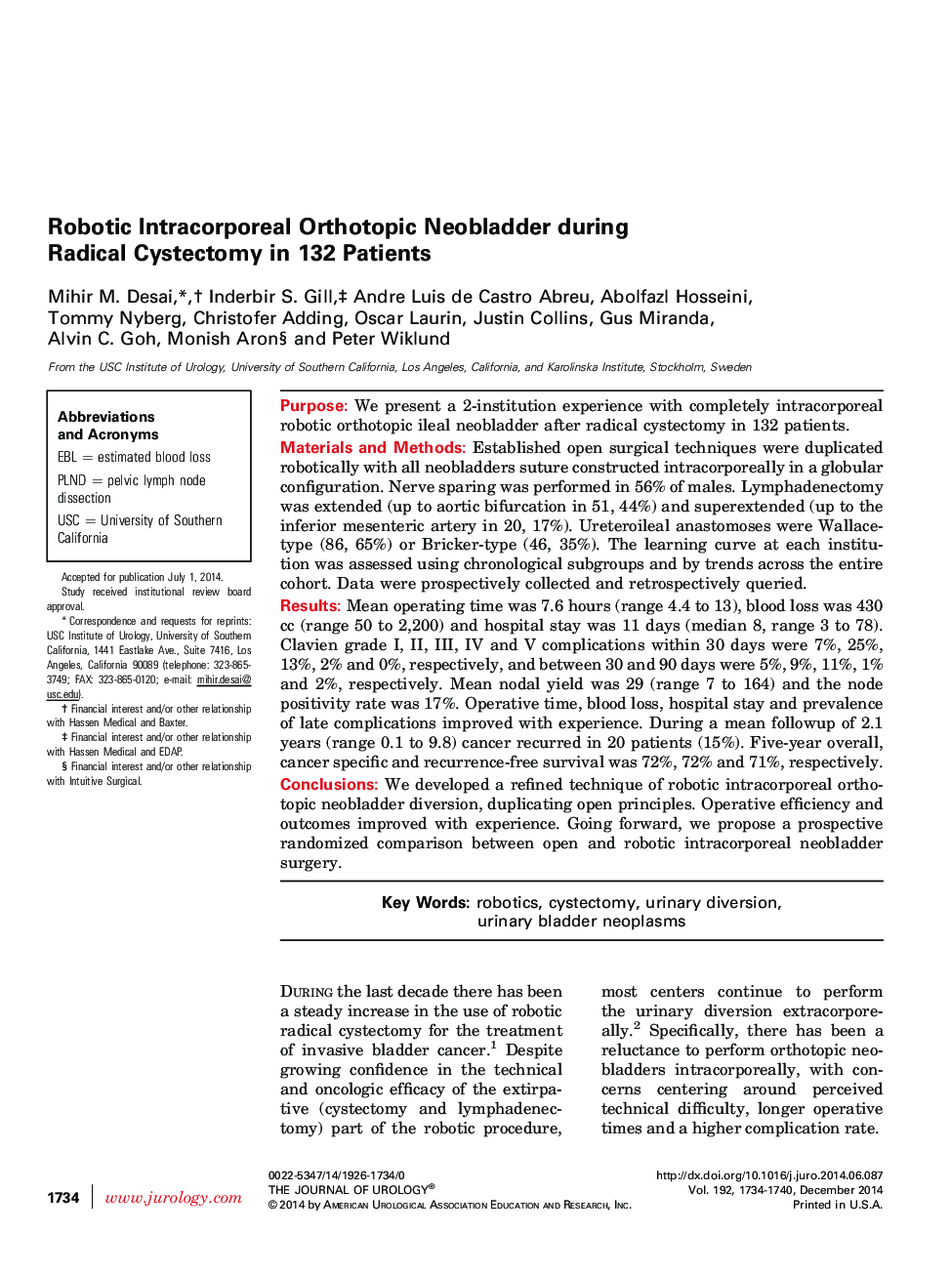| Article ID | Journal | Published Year | Pages | File Type |
|---|---|---|---|---|
| 3863258 | The Journal of Urology | 2014 | 7 Pages |
PurposeWe present a 2-institution experience with completely intracorporeal robotic orthotopic ileal neobladder after radical cystectomy in 132 patients.Materials and MethodsEstablished open surgical techniques were duplicated robotically with all neobladders suture constructed intracorporeally in a globular configuration. Nerve sparing was performed in 56% of males. Lymphadenectomy was extended (up to aortic bifurcation in 51, 44%) and superextended (up to the inferior mesenteric artery in 20, 17%). Ureteroileal anastomoses were Wallace-type (86, 65%) or Bricker-type (46, 35%). The learning curve at each institution was assessed using chronological subgroups and by trends across the entire cohort. Data were prospectively collected and retrospectively queried.ResultsMean operating time was 7.6 hours (range 4.4 to 13), blood loss was 430 cc (range 50 to 2,200) and hospital stay was 11 days (median 8, range 3 to 78). Clavien grade I, II, III, IV and V complications within 30 days were 7%, 25%, 13%, 2% and 0%, respectively, and between 30 and 90 days were 5%, 9%, 11%, 1% and 2%, respectively. Mean nodal yield was 29 (range 7 to 164) and the node positivity rate was 17%. Operative time, blood loss, hospital stay and prevalence of late complications improved with experience. During a mean followup of 2.1 years (range 0.1 to 9.8) cancer recurred in 20 patients (15%). Five-year overall, cancer specific and recurrence-free survival was 72%, 72% and 71%, respectively.ConclusionsWe developed a refined technique of robotic intracorporeal orthotopic neobladder diversion, duplicating open principles. Operative efficiency and outcomes improved with experience. Going forward, we propose a prospective randomized comparison between open and robotic intracorporeal neobladder surgery.
